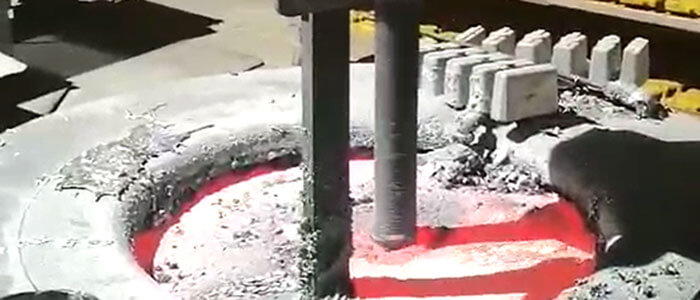Introduction
Graphite rotors, a key component in various industrial processes, have emerged as crucial tools for applications ranging from metallurgy to chemical manufacturing. In this article, we will delve into the world of graphite rotor, exploring their composition, functions, and the diverse array of industries that benefit from their unique properties.
Feature of Graphite Rotors
1. Composition and Structure:
Graphite rotors are typically crafted from high-purity graphite, a form of carbon known for its exceptional thermal and chemical stability. The structure of these rotors is designed to withstand harsh operating conditions, making them ideal for use in environments where traditional materials may fail.
2. Functions and Applications:
Graphite rotors serve various functions across different industries, primarily revolving around mixing, stirring, and processing materials. Their applications include:
a. Metallurgical Processes: Graphite rotors are widely used in the metallurgical industry for tasks such as alloying, refining, and homogenizing molten metals. Their robust structure and resistance to high temperatures make them indispensable in metal production.

b. Chemical Processing: In chemical manufacturing, graphite rotors play a vital role in mixing and reacting different substances. Their resistance to corrosion and chemical reactions makes them suitable for handling a wide range of chemicals.
c. Pharmaceutical Industry: Graphite rotor finds applications in pharmaceutical manufacturing processes where precision mixing and blending of ingredients are essential for producing pharmaceutical products.
3. Heat Resistance and Thermal Conductivity:
One of the standout features of graphite rotor is their exceptional heat resistance. This property is particularly valuable in processes involving high temperatures, such as metal smelting or chemical reactions. Additionally, graphite’s high thermal conductivity ensures efficient heat transfer during these processes.
Advantages of Graphite Rotors:
1. Corrosion Resistance:
Graphite rotors exhibit excellent corrosion resistance, making them well-suited for tasks involving aggressive chemicals or corrosive environments. This corrosion resistance contributes to the longevity and reliability of graphite rotor in various industrial applications.
2. High Thermal Stability:
The ability of graphite rotors to withstand high temperatures without compromising their structural integrity is a key advantage. This thermal stability allows for their use in processes where extreme heat is generated, ensuring consistent performance over extended periods.
3. Mechanical Strength:
The mechanical strength of graphite rotors makes them capable of handling demanding tasks, including stirring heavy materials or enduring mechanical stress during industrial processes. This strength contributes to the overall durability and reliability of these rotors.
4. Precision Mixing:
Graphite rotor provides precise and controlled mixing, essential for achieving uniform compositions in various materials. This precision is crucial in industries where product quality and consistency are paramount.
Future Trends and Innovations:
As industries continue to evolve, so do the materials and technologies they rely on. Graphite rotor is likely to see further innovations, potentially incorporating advanced materials or designs to enhance their performance even further. The ongoing pursuit of sustainability and efficiency in industrial processes may also drive developments in the use of graphite rotor.
Conclusion:
Graphite rotor stands as versatile and resilient components in the realm of industrial applications. Their unique combination of corrosion resistance, thermal stability, and mechanical strength makes them indispensable in processes spanning metallurgy, chemical manufacturing, and pharmaceuticals. As industries advance, graphite rotors are poised to play a central role in shaping the future of various manufacturing and processing sectors.


